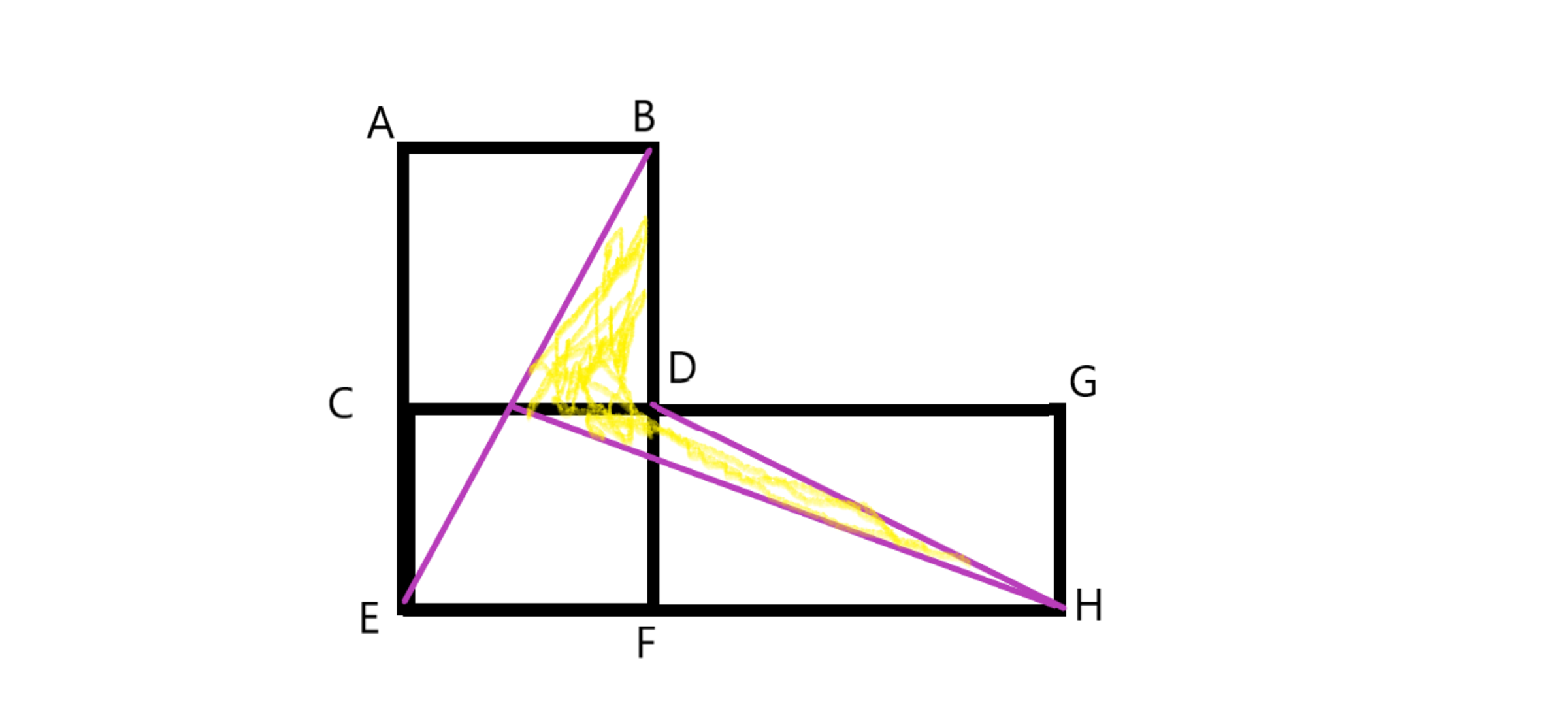Interesting problem (don't think too hard)
Geometry
Level
2
 If rectangle ABCD has an area of 100cm
, what is the area of the area shaded in yellow?
If rectangle ABCD has an area of 100cm
, what is the area of the area shaded in yellow?
The answer is 50.
This section requires Javascript.
You are seeing this because something didn't load right. We suggest you, (a) try
refreshing the page, (b) enabling javascript if it is disabled on your browser and,
finally, (c)
loading the
non-javascript version of this page
. We're sorry about the hassle.
Let X be the intersection of B E and C D .
The area of the upper triangle is ( 1 / 2 ) ( X D ∗ B D ) . The area of the lower triangle is ( 1 / 2 ) ( X D ∗ D F ) .
Thus the area shaded in yellow is ( 1 / 2 ) ( X D ( B D + D F ) ) .
Assuming the line E F is parallel to the line C G , the triangles △ B X D and △ B E F are similar. That implies that
B D X D = B D + D F E F . If we cross-multiply and use fact E F = C D , we see that B D ∗ C D = X D ( B D + D F ) . Thus the area in yellow is ( 1 / 2 ) B D ∗ C D = 5 0 .